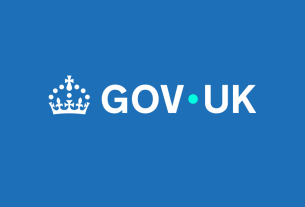The abbreviation “ESG Data” is widely used these days. It refers to information on the Environment, Social, and Governance performance of companies. However, most people don’t know that there are really two Social scores hidden in the letter “S.”
Community and Employee Indicators
The CSRHub system tracks six indicators of a company’s sustainability in the social area. Three of these describe how a company interacts with outside stakeholders—we call these “Community” indicators. The other three show how the company interacts with internal stakeholders—we call these “Employee” indicators. We found we had to use six indicators for these social factors—compared to three each for environment and governance—because there was twice as much data available to us for social issues than there was for the two other pillars of ESG.
Inside Metrics Perform Better
Over the past two years, we have seen the thousands of entities we track perform better on “Inside” employee metrics than they do on “Outside” community metrics. This pattern makes sense. Companies care first about the diversity, pay and benefits, and training and safety of their staff. Contributions to society as a whole via philanthropy, product and service impact on society, support for human rights, and support for supply chains don’t have the same direct benefit that happy and engaged employees do.
Wide Variation
What is interesting is the wide variation in the gap between inside and outside performance. It is relatively rare for a company to have similar scores on these two measures. We found that only 31% of the scores for the two “S” measures are within two ratings points for 16,000+ entities that we fully rate.
Scoring with a Single “S”
This means that scoring systems that use a single “S” score may be missing or simplifying interesting variations most of the time. It also means that companies that are trying to improve their social performance need to look separately at their internal and external relationships, or they may focus on the wrong area.
Splitting the S Analysis
The chart below shows that there are “tails” of 10+ variation that total about 20% of all companies. (CSRHub currently offers sustainability data on more than 50,000 entities. Its coverage universe includes virtually all publicly traded companies, most large private companies, and both government and non-government entities.)
Each of the six factors we include in the CSRHub view of S is driven by thousands of different ESG metrics. Investors who seek to understand and predict how ESG may affect a company’s performance, should probably at least split their S analysis into two parts—if not more.
 Bahar Gidwani is CTO and Co-founder of CSRHub. He has built and run large technology-based businesses for many years. Bahar holds a CFA, worked on Wall Street with Kidder, Peabody, and with McKinsey & Co. Bahar has consulted to a number of major companies and currently serves on the board of several software and Web companies. He has an MBA from Harvard Business School and an undergraduate degree in physics and astronomy. He plays bridge, races sailboats, and is based in New York City.
Bahar Gidwani is CTO and Co-founder of CSRHub. He has built and run large technology-based businesses for many years. Bahar holds a CFA, worked on Wall Street with Kidder, Peabody, and with McKinsey & Co. Bahar has consulted to a number of major companies and currently serves on the board of several software and Web companies. He has an MBA from Harvard Business School and an undergraduate degree in physics and astronomy. He plays bridge, races sailboats, and is based in New York City.
About CSRHub
CSRHub offers one of the world’s broadest and most consistent set of Environment, Social, and Governance (ESG) ratings, covering 50,000 companies. Its Big Data algorithm combines millions of data points on ESG performance from hundreds of sources, including leading ESG analyst raters, to produce consensus scores on all aspects of corporate social responsibility and sustainability. CSRHub ratings can be used to drive corporate, investor and consumer decisions. For more information, visit www.CSRHub.com. CSRHub is a B Corporation.



